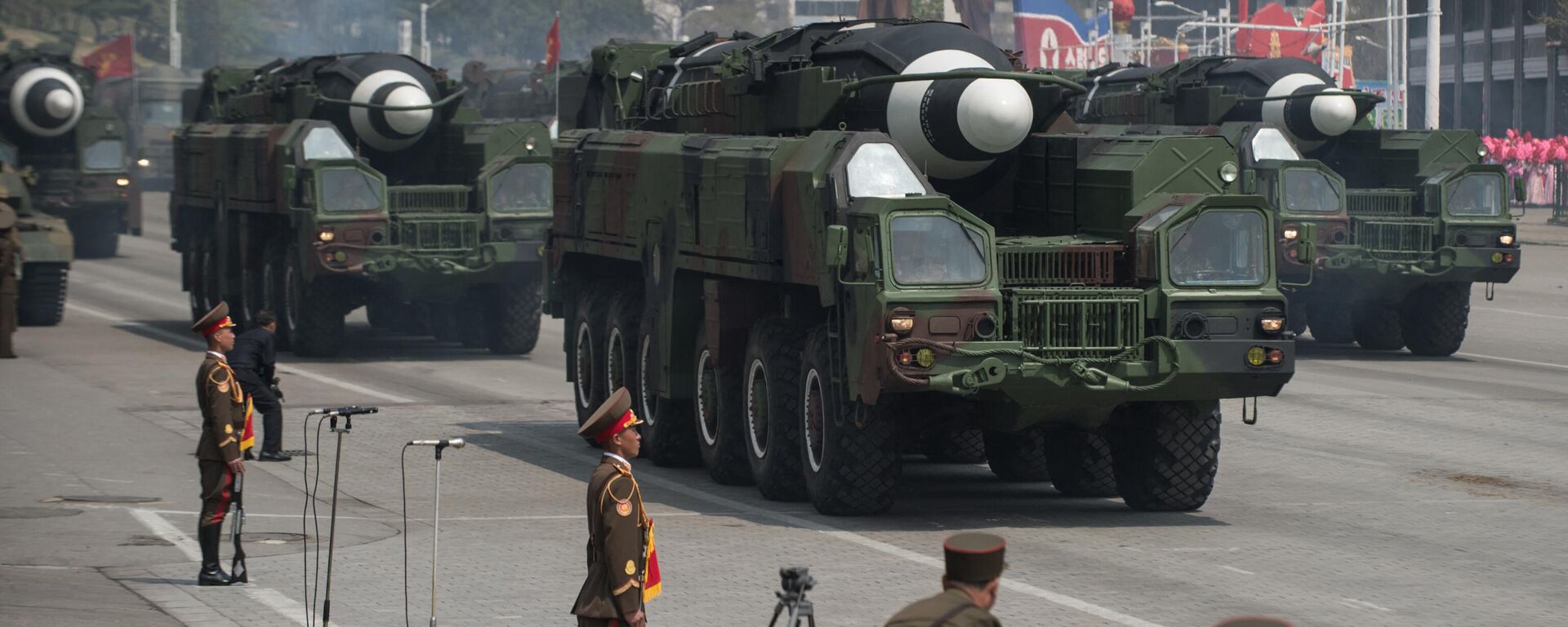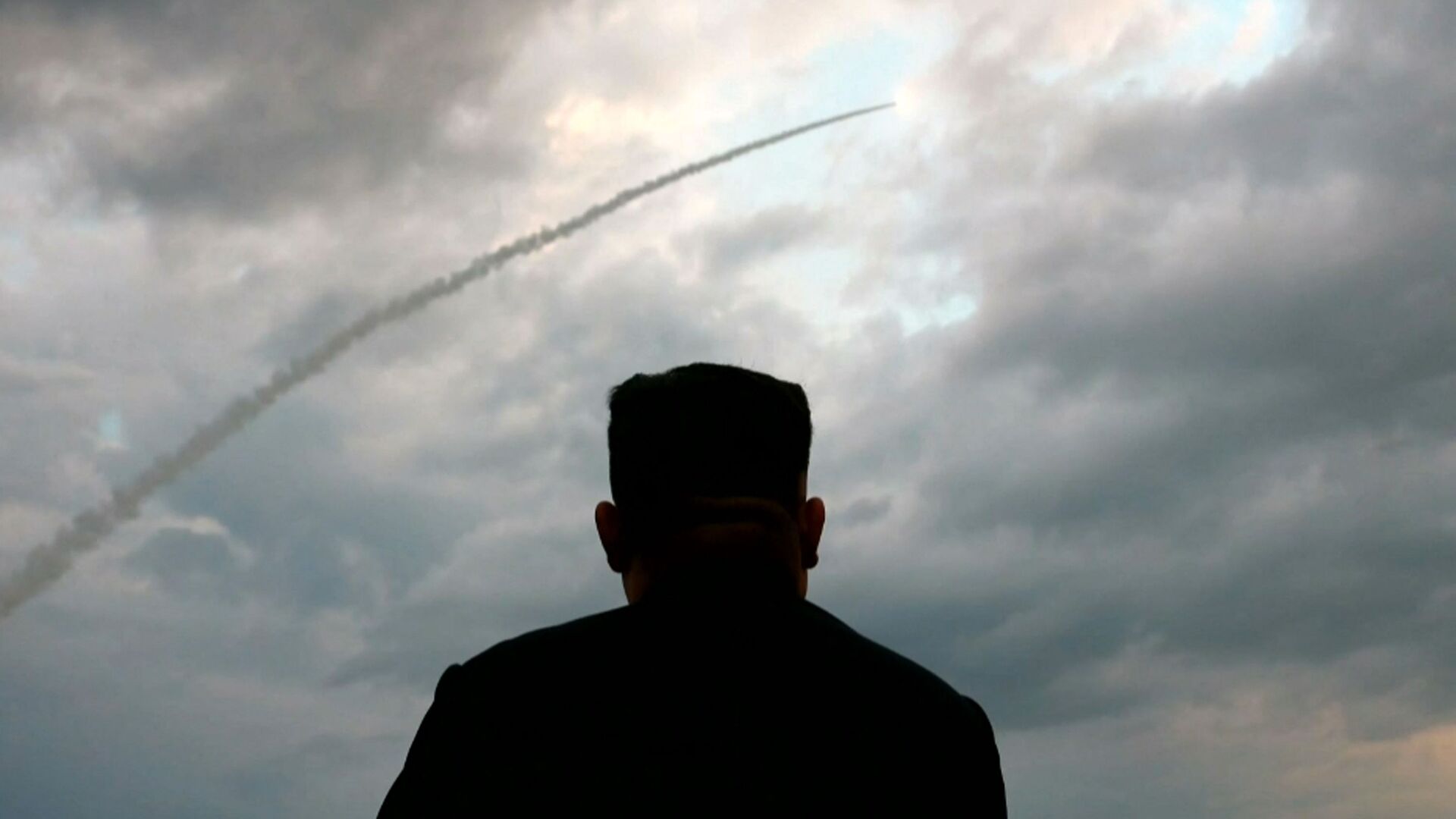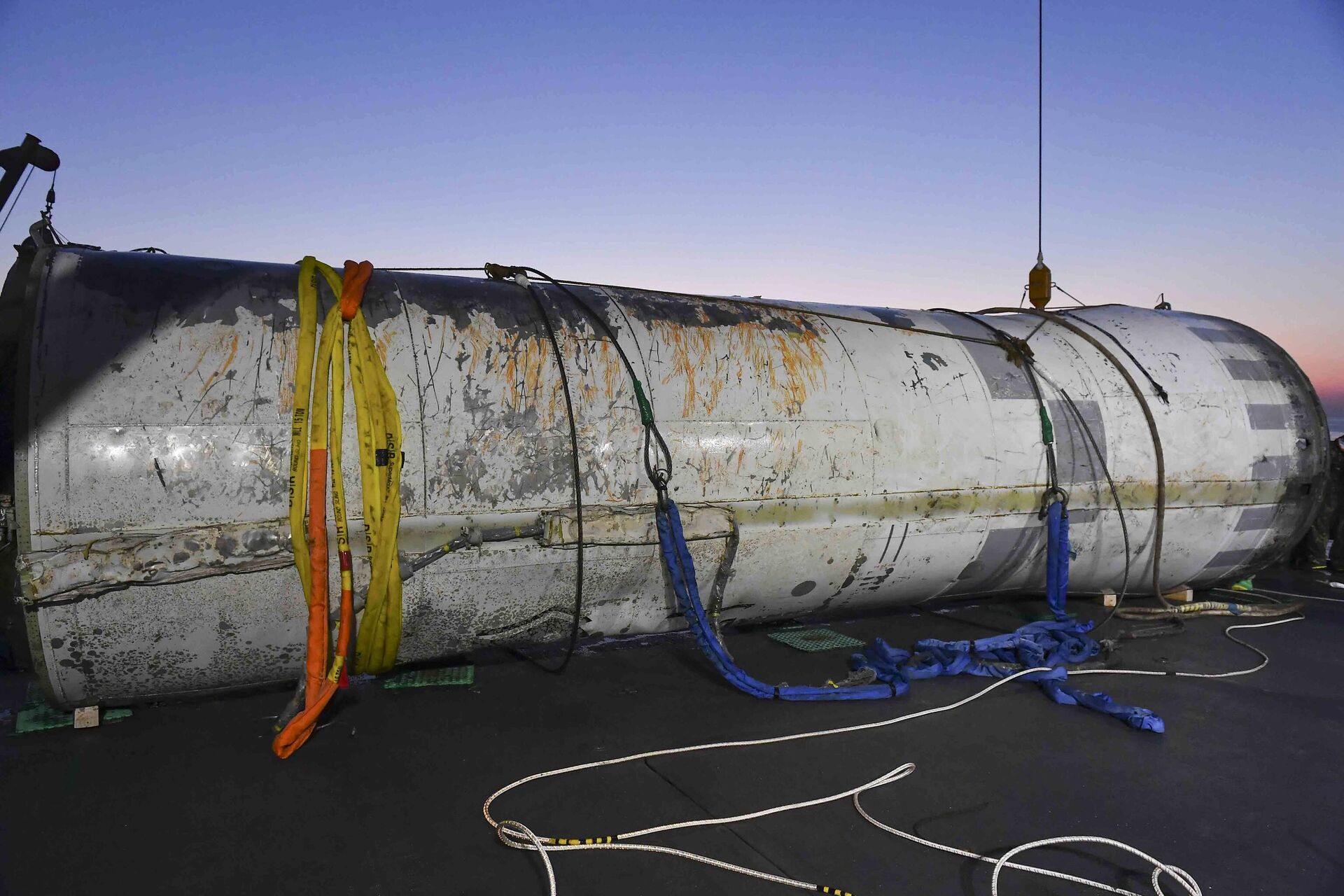https://sputnikglobe.com/20230616/photo-seoul-recovered-rocket-used-in-botched-north-korean-satellite-launch-1111201980.html
Photo: Seoul Recovers Rocket Used in Botched North Korean Satellite Launch
Photo: Seoul Recovers Rocket Used in Botched North Korean Satellite Launch
Sputnik International
The South Korean military has recovered the second stage propellant of the North Korean space launch vehicle that was intended to launch North Korea's first satellite into space.
2023-06-16T03:33+0000
2023-06-16T03:33+0000
2023-09-18T13:34+0000
south korea
koreas
yellow sea
spy satellite
rocket launch
missile launch
asia
north korea
https://cdn1.img.sputnikglobe.com/img/07e5/03/11/1082366533_0:156:3000:1844_1920x0_80_0_0_f53b9acc8a39321e7bb1dffdeb3d08f8.jpg
The South Korean Joint Chiefs of Staff announced Friday that it recovered what it believes to be the second-stage propellant of the North Korean space launch vehicle Chollima Type 1.In late May, North Korea attempted to launch its first military satellite, which it said would be used to keep an eye on US and South Korean military movements in the area. The launch proved a failure when the rocket’s second stage propellant failed to ignite, with the rocket later falling into the Yellow Sea.Photos of the North Korean rocket remains were released by the South Korean military, which described it as 2.5 meters in diameter and 12 meters long. Preliminary analysis leads South Korean authorities to believe the rocket’s engine, fuel cylinder and oxidizer cylinder may all still be intact.Experts previously analyzed the video of the rocket firing and determined the first-stage rocket was likely the same type North Korea used in its intercontinental ballistic missiles, the Hwasong-15 and Hwasong-17. The recovered second stage, which did not fire, appears to be newly developed.In addition to providing insights into advanced North Korean missile technology, authorities also believe the recovery may also reveal if any foreign components were used in the rocket’s production, despite the strict sanctions placed on North Korea.China was also reportedly looking for the North Korean missile. South Korea is continuing to search for other parts of the rocket and the US and South Korea are jointly studying the second stage of the rocket and any other parts that are found.North Korea also fired two short-range missiles on Thursday, with at least one of the missiles landing inside of Japan’s exclusive economic zone.
https://sputnikglobe.com/20230218/monster-missile-does-north-korea-have-icbms-capable-of-reaching-us--1107575437.html
south korea
koreas
yellow sea
north korea
Sputnik International
feedback@sputniknews.com
+74956456601
MIA „Rossiya Segodnya“
2023
News
en_EN
Sputnik International
feedback@sputniknews.com
+74956456601
MIA „Rossiya Segodnya“
Sputnik International
feedback@sputniknews.com
+74956456601
MIA „Rossiya Segodnya“
north korean satellite, south korea, missile launch, south korea recovers north korean technology, spy satellite
north korean satellite, south korea, missile launch, south korea recovers north korean technology, spy satellite
Photo: Seoul Recovers Rocket Used in Botched North Korean Satellite Launch
03:33 GMT 16.06.2023 (Updated: 13:34 GMT 18.09.2023) North Korea planned to showcase their increased military capabilities with the spy satellite's launch, but it fell harmlessly into the sea.
The South Korean Joint Chiefs of Staff announced Friday that it recovered what it believes to be the second-stage propellant of the North Korean space launch vehicle Chollima Type 1.
In late May, North Korea attempted to launch its first military satellite, which it said would be used to keep an eye on US and South Korean military movements in the area. The launch proved a failure when the rocket’s second stage propellant failed to ignite, with the rocket later falling into the Yellow Sea.
Photos of the North Korean rocket remains were released by the South Korean military, which described it as 2.5 meters in diameter and 12 meters long. Preliminary analysis leads South Korean authorities to believe the rocket’s engine, fuel cylinder and oxidizer cylinder may all still be intact.
Experts previously analyzed the video of the rocket firing and determined the first-stage rocket was likely the same type North Korea used in its intercontinental ballistic missiles, the Hwasong-15 and Hwasong-17. The recovered second stage, which did not fire, appears to be newly developed.
In addition to providing insights into advanced North Korean missile technology, authorities also believe the recovery may also reveal if any foreign components were used in the rocket’s production, despite the strict sanctions placed on North Korea.
China was also reportedly looking for the North Korean missile. South Korea is continuing to search for other parts of the rocket and the US and South Korea are jointly studying the second stage of the rocket and any other parts that are found.
North Korea also fired two short-range missiles on Thursday, with at least one of the missiles landing inside of Japan’s exclusive economic zone.

18 February 2023, 14:37 GMT




